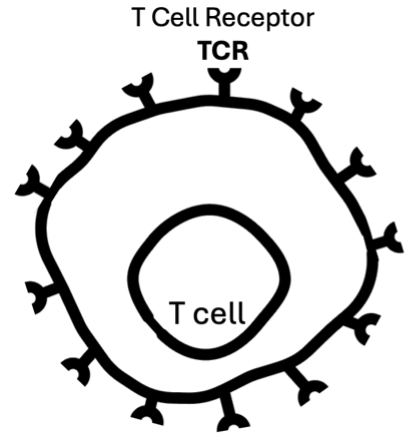Meet the Scientist
Dr. Leslie Berg
Professor & Chair
Department of Immunology & Microbiology

What happens when our immune system finds a foreign invader?
Imagine your immune system as a vast military working together to protect all of the different areas of your body. There are many different jobs within this military that include specialists trained for precise roles. These specialists are the different cells of the immune system. Because the borders of your body are relatively open, different foreign invaders, like viruses or bacteria, can sneak in with the food you eat, the air you breathe, or in the event of an injury the wound that damages your skin. When this happens, the specialist cells spring into action to carry out the tasks of identifying the invader, marking it as a problem, getting rid of it, and cleaning up any messes that it left behind.
What does the T cell “specialist” do?
Dr. Leslie Berg and her research team in the Department of Immunology and Microbiology on the University of Colorado Anschutz Medical Campus study one particular specialist immune cell – the T cell. T cells are trained to recognize small pieces of foreign viruses or bacteria and then activate their arsenal of weapons to destroy these invaders. When a T cell comes in contact with a piece of an invader, a complex set of signals are activated within the T cell to initiate its response. T cell signaling pathways are what Leslie and her research team are most interested in studying.
How does a T cell react to detecting an invader?
We have billions of T cells in our body and each individual T cell has thousands of T cell receptors (TCRs) covering the outer layer of the cell. These receptors have special grooves to detect differently shaped parts of viruses or bacteria. We can think of the TCR grooves like a fingerprint reader. Each individual T cell has a fingerprint reader looking for one specific fingerprint that the invading pathogen might exhibit. Together, all of the T cells in the body can then look for trillions of different fingerprints! When a TCR finds the fingerprint it is searching for, it sends signals down into the interior of the cell to start a response to destroy that invader. There are many components of the signaling pathway that pass this message along. One of the common factors that transfer the message down the line are kinases. Kinases are protein enzymes that activate other proteins in the pathway by adding a chemical alert.

This alert is a phosphate group (the fancy chemical way to write it is PO4-3) which is directly attached to the protein acted on by a kinase. As the message is transferred, it is like turning on a new light as you make your way further into the cell to show it the right path to go down to activate the correct immune response to protect the body against the invading pathogen.
How does Dr. Berg’s lab study ITK, and what have they learned?
To study how ITK works in the T cell, Leslie’s research team uses what’s called a knockout model – where the ITK gene is knocked out of a cell and is no longer in the cell to do its job. ITK has been completely removed! Knockout models are frequently used in biomedical research because we can learn a lot about what a gene does when we observe all of the things that go wrong when it is missing. A real-life example would be when Mom doesn’t help her preteen child pack for a trip and they arrive to find they didn’t bring any socks, or toothpaste, or a phone charger – that preteen realizes just how helpful Mom is to the packing process!
The research team in Leslie’s lab has learned that when a T cell that is missing ITK is exposed to a virus that it recognizes it doesn’t produce the same signaling or immune response compared to a T cell with ITK does. The researchers discovered that lower numbers of defense molecules were made by the ITK knockout T cells and that those cells were not able to travel through the body to where the virus infection was located. They found that having ITK is critical for the complete message to be sent down the signaling pathway to get all of the components of the T cell response to function correctly. Basically, ITK is essential to produce a proper T cell response!
The research team in Leslie’s lab has learned that when a T cell that is missing ITK is exposed to a virus that it recognizes it doesn’t produce the same signaling or immune response compared to a T cell with ITK does. The researchers discovered that lower numbers of defense molecules were made by the ITK knockout T cells and that those cells were not able to travel through the body to where the virus infection was located. They found that having ITK is critical for the complete message to be sent down the signaling pathway to get all of the components of the T cell response to function correctly. Basically, ITK is essential to produce a proper T cell response!
If parts of the T cell signaling pathway are broken, what does that mean for patients?
Sometimes people can inherit genetic mutations, or “mistakes”, that prevent important proteins from being properly made. Individuals who can’t make ITK have what’s called an immunodeficiency, or inability to produce a complete immune response and fight off infections. By studying ITK and learning more about all of the ways that it helps with the immune response, Leslie and her team hope to provide information that can help create new treatments for these types of diseases. On the other hand, some people are living with diseases like autoimmunity or cancers where T cell signaling has gone awry and is aimed at destroying the body rather than a foreign pathogen. In this case, doctors are using the information that Dr. Berg’s lab has found to work on specialized treatments that stop the function of kinases like ITK so that the immune system is not overactivated when it has mistakenly marked parts of your body as something to target and destroy.
Ultimately, there are lots of exciting things still left to learn about signaling within the immune system. Leslie and her research team are continuing to work on solving pieces of this puzzle one experiment at a time.
Ultimately, there are lots of exciting things still left to learn about signaling within the immune system. Leslie and her research team are continuing to work on solving pieces of this puzzle one experiment at a time.
If you want to learn more about the scientist, please head to their official CU webpage.